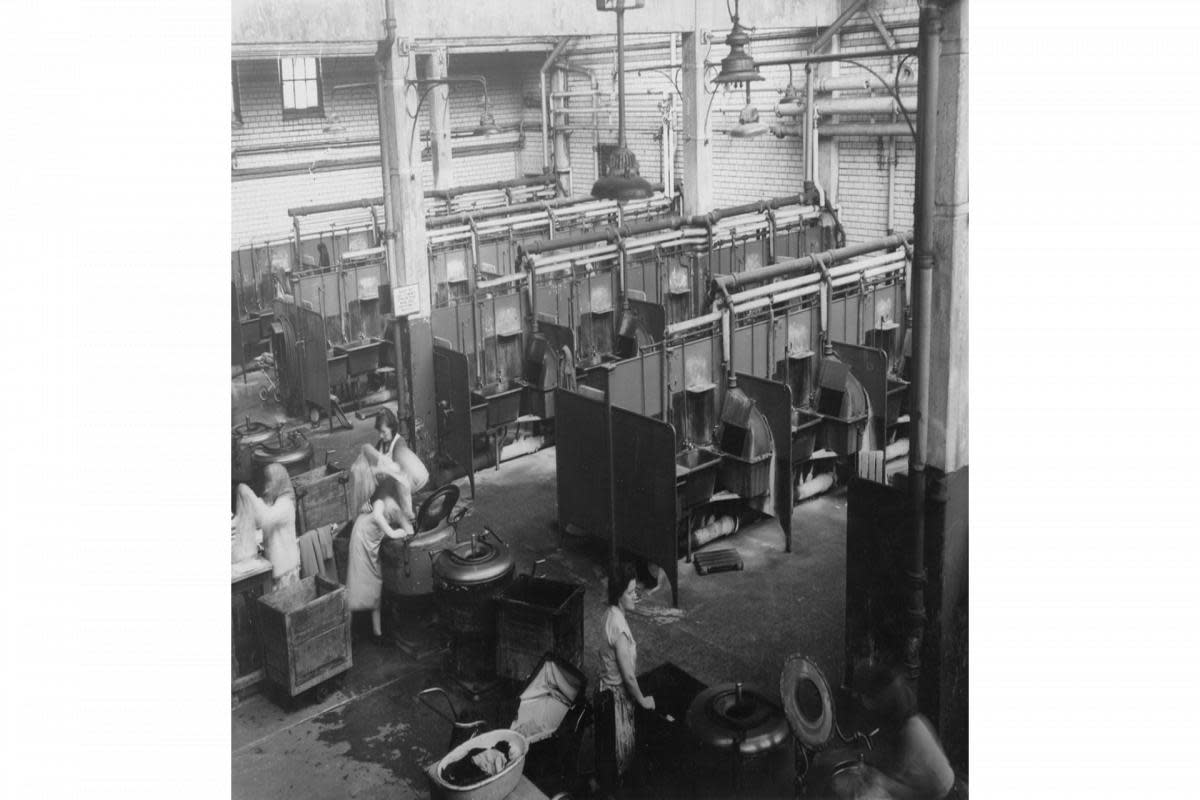Women, weans and washing: The story of Glasgow's steamies and bath-houses

LIKE many Southsiders, I learned to swim at the Govanhill Baths.
At a young age, I was too occupied with the task of keeping my head above water and the promise of a post-swim chocolate bar to be concerned with the history of the beautiful building in which I swam my first metres.
Since finding my way back to swimming as an adult, however, I’ve found myself fascinated by Glasgow’s public baths and washhouses, and the crucial role they played in the everyday lives of Glaswegians.
(Image: Glasgow City Archives)
Glasgow’s first municipal bath and washhouse opened in 1878, although the foundations for this move on the part of Glasgow Corporation had been laid more than a decade earlier with the introduction of the water supply from Loch Katrine and the impetus for health and sanitary reform provided by the 1866 Improvement Act.
Greenhead Public Baths and Wash-House, on Glasgow Green, brought the city’s inhabitants two public swimming pools, thirty-four private baths, and space for forty washers at the wash-house.
(Image: Glasgow City Archives)
Demand for the facilities was high – indeed, it was only a few months after opening that the Baths Committee were discussing extensions to the building to meet the needs of the swimmers, bathers and washers.
Within seven years, four more Corporation baths and washhouses were opened, at Woodside, Cranstonhill, Townhead and the Gorbals.
READ NEXT: 'All outsiders together': Glasgow's 80s goth scene relived in new book
At a time when very few had access to washing facilities at home, the amenities provided at the baths and steamies were crucial for Glaswegians.
In the context of overcrowding and disease in the city, Glasgow Corporation was keen to maximise attendance at these establishments.
(Image: Glasgow City Archives)
In the 1892 annual report of the Committee on Baths and Wash-Houses, the Superintendent hopes that the children who attend the wash-houses with their mothers might grow into men and women with “habits of cleanliness”, who “would feel happy only when they had clean skins and clean garments.”
A major attraction of the baths and washhouses was the provision of hot water.
Remarking that, “there is nothing more likely than that sooner or later a supply of hot water will be looked upon as being as necessary in cities as a supply of cold water”, the Superintendent notes that “cold water, with which to wash the body, is not at all wanted by city people” – a statement which will be unsurprising to anyone who has experienced a damp Glasgow winter.
While the water brought in from Loch Katrine was vastly cleaner than the previous supply from the Clyde, it was not without its “imperfections”.
(Image: Glasgow City Archives)
As the Superintendent notes in the annual report for 1891, “Loch Katrine water contains clay in sufficient quantity to give a pondful of it a colour resembling sherry in a glass.”
He continues that “bathers entering such a pond remove portions of the brown matter with their feet”, and that some “fastidious persons refuse to strip when they look at the water”. These choosy bathers are generally persuaded by the information that “they drink the same quality”.
Of equal importance to the washing of bodies was the washing of clothes. The steamies, which adjoined the baths and were characterised by the copious amounts of, well, steam, were hives of activity. Here women, often accompanied by their weans, worked hard to clean piles of dirty laundry, hauled from the house to the steamie in prams and carts.
READ NEXT: Mystery still surrounds missing Glasgow teenager who 'vanished' into thin air
Despite the fact that in some localities every tenement was equipped with private wash-houses and drying courts, the Superintendent notes that that “the women prefer to carry their washings some distance to properly equipped places […] rather than do the work in a private wash-house, where they may have to wait on the boiling of water; where there may be no tubs; where the coal they burn coasts almost as much as all the conveniences at a public establishment.”
Another important attraction for women was the opportunity to be in community during these hours of sweat-inducing toil.
Many remember being in the steamie as children while their mothers worked and came together with friends and neighbours.
The use of steamies declined in the 1980s as more people began to own their own washing machines, but a sense of fondness for the old wash-houses and the opportunity they provided for socialising and community remains.
Send us your stories and memories of the Glasgow steamies and baths - email ann.fotheringham@glasgowtimes.co.uk or write to Ann Fotheringham, Glasgow Times, 125 Fullerton Drive, Glasgow G32 8FG.

 Yahoo News
Yahoo News 
